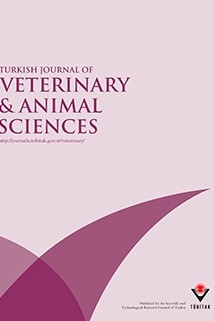
Turkish Journal of Veterinary and Animal Sciences
Yazarlar: H. İbrahim HALİLOĞLU, N. Mevlüt ARAS
Konular:-
Anahtar Kelimeler:Fatty Acid Profile,Food,Trout
Özet: During recent decades, the study of fatty acids (FAs) belonging to the n-3 family in seafood has intensified due to their beneficial effect on cardiovascular disease. This study was undertaken to determine the FA composition of muscle lipids of three different farm raised trouts (Salvelinus alpinus, Salmo trutta fario and Oncorhynchus mykiss) fed the same diet and raised under the same conditions. Palmitic acid (16:0) in total saturated fatty acid (SFA) and oleic acid (18:1 n-9) in monounsaturated fatty acid (MUFA) were the most abundant FAs and significant differences (P < 0.05) were observed between fish species. The differences in total SFA among the trouts were significant (P < 0.01), and O. mykiss had the highest (31.92%) SFA content while S. trutta fario showed the lowest in their edible muscle tissue. However, there was a significantly (P < 0.01) opposite observation for MUFA among the trouts, in which S. trutta fario had the highest content (41.90%) of MUFA in their muscle tissue while O. mykiss had the lowest (30.81%). The differences for the polyunsaturated fatty acid (PUFA) content among the species were not significant (P > 0.05). O. mykiss had the highest n-3 PUFA (22.41%) while S. trutta fario showed the greatest n-6 PUFA concentration. Eicosapentaenoic acid (EPA, 20:5 n-3) concentrations were 3.07, 3.03 and 1.78% in O. mykiss, S. alpinus and S. trutta fario, respectively. In addition, O. mykiss had a higher content (19.17%) of docosahexaenoic acid (DHA, 22:6 n-3) than S. alpinus (15.45%) and S. trutta fario (12.74%), and the difference of this FA among the trouts was significant (P < 0.01). The ratios of n-3/n-6 PUFA content indicating the availability of n-3 PUFA that are beneficial for human health were 1.58, 1.27 and 0.95 for O. mykiss, S. alpinus and S. trutta fario, respectively. In conclusion, the results of this research for FA analysis suggest the superiority of rainbow trout (O. mykiss) for human nutrition in terms of n-3 PUFA contents and the effects on health.